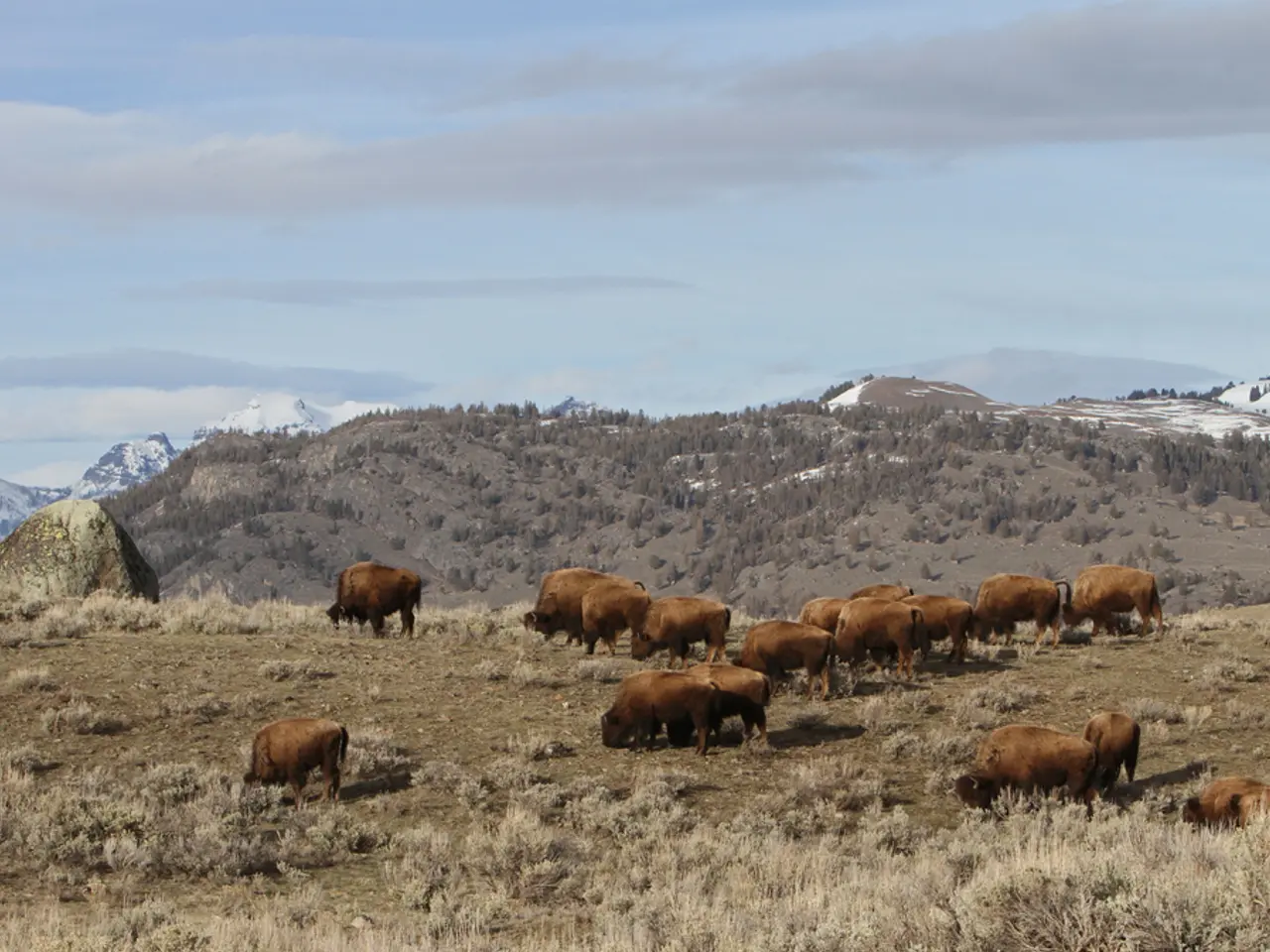Desert Animals: A Detailed Insight into Survival Strategies of Life in the Desert
In the vast expanse of the Sahara Desert, life is a constant struggle for survival. Yet, some remarkable creatures have evolved unique adaptations to thrive in this harsh environment.
The addax antelope, with its light-coloured coat that reflects sunlight, is a master of the Sahara. It can go months without drinking water, and its hooves, adapted for walking on sand without sinking, make it a formidable desert dweller.
Similarly, the fennec fox, a small desert animal, has large ears to dissipate heat and improve hearing, thick fur to protect against cold desert nights, and burrowing behavior to escape the heat of the day.
Deserts, characterised by low precipitation levels, extreme temperature variations, and minimal vegetation, pose significant challenges for their inhabitants. The main threats to these populations are habitat loss, primarily due to deforestation and land degradation, and the impacts of wildfires that destroy habitats and directly endanger animals. Additionally, challenges like poaching, invasive species, and environmental changes during prolonged dry seasons contribute to the decline of these animal populations.
One such adaptive creature is the kangaroo rat, which does not drink water and instead derives moisture from seeds. Its efficient kidneys help minimise dehydration, and it is nocturnal to avoid extreme daytime temperatures.
The sidewinder snake, named for its unique sidewinding motion, reduces contact with hot sand in this way. It can also detect heat signatures of prey using infrared-sensitive pits near its eyes.
The desert tortoise, spending 90% of its life underground in burrows to escape the heat, is another fascinating desert dweller. It stores water in its bladder and can live up to 80 years.
Deserts can reach daytime highs of over 50°C (122°F) and drop to near freezing temperatures at night. Many desert animals obtain water from their food or have developed efficient water storage and conservation methods.
The Gila monster, a venomous lizard, is another example of such adaptation. It stores fat in its tail for energy during food shortages, moves slowly to conserve energy, and uses venom to subdue prey.
Desert animals often exhibit nocturnal behaviour, water conservation techniques, burrowing and underground sheltering, and camouflage and defensive mechanisms to survive in these harsh environments. These adaptations are not just fascinating; they are essential for survival in the Sahara Desert.
Read also:
- Bishop expresses that Respect Life Month holds additional significance during the Jubilee Year
- Protesters personally deliver correspondence to Fetterman's workplace
- Delay in CDC's Decision on Hepatitis B Vaccine: Insights into Potential Alterations for Parents
- Specialist in Vision Therapy: Expert in Behavioral and Developmental Optometry





